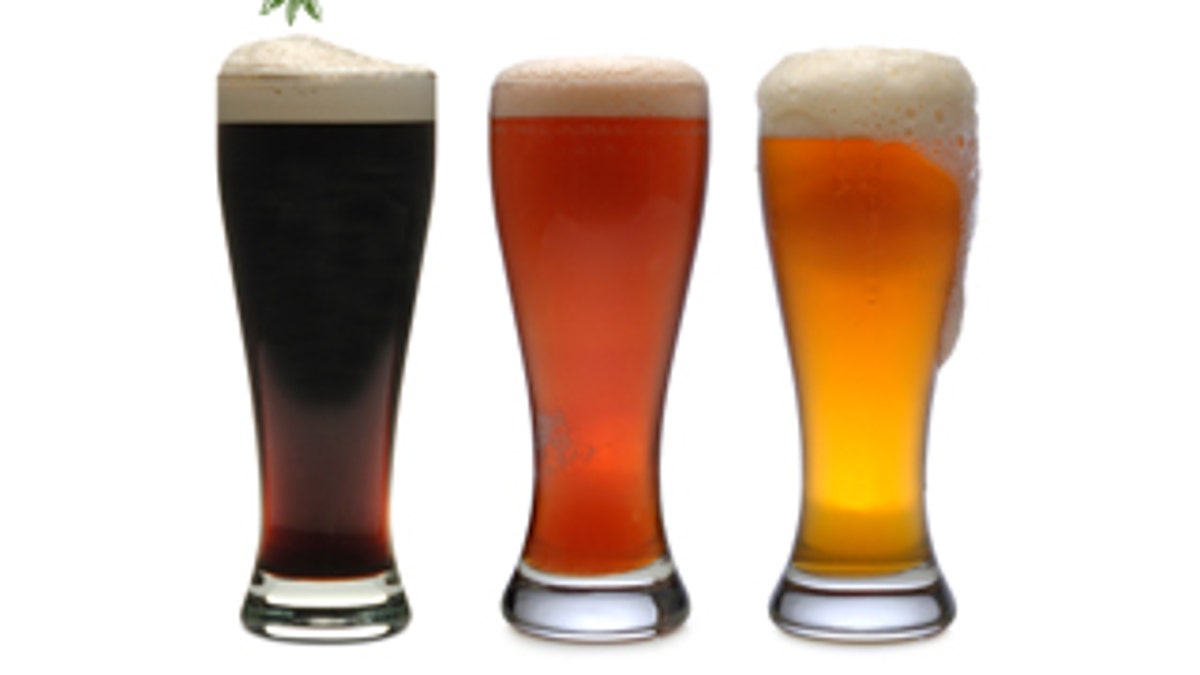
(iStock)
It’s axiomatic: from summer barbecues to Octoberfest, beer makes the party. Lucy Saunders takes it a step further. Beer, she says, makes the meal when the meal’s cooked with it. And she’s talking more than beer-battered onion rings.
She’s talking Cheddar Ale Spread with ancho, chipotle and pale ale, and Chocolate Malt Ganache. Saunders, author of “Cooking With Beer,” “Best of American Beer and Food” and “Grilling with Beer” also runs Beercook.com, whose emphatic motto is: “Because beer is Food!” Beer, specifically craft beer, she says, is for far more than just quaffing.
Most people understand - intuitively if not practically - that cooking with wine infuses food with depth, distinction and subtlety. Some dishes use the harder stuff, too; think Penne alla Vodka, or Bananas Foster aflame with rum. Beer hasn’t (yet) become part of our pantry, says Saunders, because while cooking with beer has been part of culinary history for centuries, “it’s been under-appreciated as it's generally been the province of home cooks, via hand-me-down recipes.”
Wine is a white tablecloth restaurant staple, and Saunders argues that craft brews belong there too, because their broad, nuanced flavor spectrum rivals that of wine. She cultivates beer awareness through her books and the cooking and pairing classes she teaches throughout the Great Lakes region. And she’s convinced that once people learn about craft beer they’ll start pairing it with food and marvel at its cooking versatility, just like wine. It’s really not a stretch. Wine is grape juice fermented by yeast, beer is malted barley fermented by yeast with hops, water and other grains added. Both create stunning arrays of distinctive flavors when handled properly.
Saunders isn’t suggesting that we enjoy beer and wine in the same way. Football enthusiasts in the nosebleed section won’t be sipping Côtes du Rhône anytime soon and softball players won’t be taking long pulls on icy white wine spritzers on hot summer nights. Beer will always epitomize casual camaraderie, but now, especially with craft beer, it’s poised to also take its place in the pantheon of sophisticated beverages.
A craft beer’s flavor is determined by how barley is treated during malting, the process of germinating barley to create a high-starch content seed. The starch will eventually be converted into a fermentable sugar. The ‘maltster’ heats the grain to stop seed growth, which retains the starch content, then roasts it to develop various flavor characteristics and color, similar to the process of roasting coffee beans. Briess Malting in Wisconsin, says Saunders, is the last independent specialty maltster in North America and makes an incredible range of specialty malts for brewing.
Saunders, a Midwest native who, in addition to teaching, runs water conservation workshop for brewers and cheese makers, says she has a “palate for grains” and has loved the taste of beer for as long as she can remember. It started with her mom’s Cheese and Beer soup (beer, caramelized onions, asiago, cheddar and parmesan), Carbonnade (a jaw-dropping ale, beef and onion stew and a major Belgian culinary contribution along with waffles and chocolates) and her dad’s beer-based steak marinades.
The first commercial cookbooks, including some with recipes for cooking with beer, appeared in England during the Tudor era, late 1400s to mid-1500s. That was due not to beer’s ubiquity but to Gutenberg inventing the printing press in 1440. Previously, cookbooks were hand-written and used primarily by monasteries and the upper classes, says Saunders, who majored in Old and Middle English. Instead of a term paper she translated Tudor recipes, cooked and catered a medieval feast for her professor and other students and “hired frat brother friends as serfs to serve dinner.”
Americans’ love affair with craft beers started in the 1980s for a few reasons, says Saunders. By the mid-70s many states lifted a Prohibition-era ban on home brewing allowing people to recapture a forgotten craft. Also, in the late 70s and 80s, study-abroad programs proliferated and students started tasting European beers that had been crafted from long-standing brewing traditions, introducing their palates to flavors other than Budweiser and Miller Lite.
Saunders says that craft brewing combines the artistry and creativity of cooking with the rigors of science. It’s about fermentable sugars, final alcohol content, color and mouth-feel, and evoking flavor and aromatics from grain’s entire taste spectrum. “It’s a continuous learning and creativity curve. That’s the allure. It’s a great challenge and when the results are delicious they are shared and enjoyed. It’s why it’s here to stay.”
With her vast knowledge of all things beer, you’d think Saunders would make a mean brew. Nope. “I’m more confident of my skill as a chef. I don’t home brew. Making fine beer is really hard. I like the convenience of buying it.”
